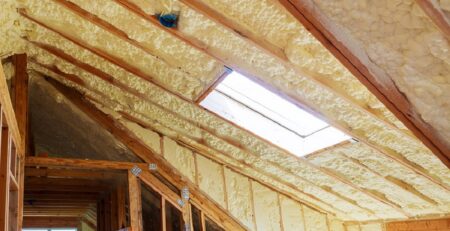Common Roof Types Guide | Roofing Materials and Repairs
Roof problems can hit anytime. Maybe a storm came and knocked some shingles off or water started dripping from the ceiling. Knowing about common roof types helps you fix problems faster and avoid bigger damage. Every roof type has its own strengths and weaknesses and works better in certain situations.
Asphalt Shingle Roofs
Asphalt shingles are the most popular type of roof. Lots of homes have them because they are cheap and easy to install. But even simple roofs can have trouble if shingles curl or crack. One homeowner called after a rainstorm because water started leaking through tiny cracks. If shingles are damaged, replacing them quickly can save a lot of money.
Pros: Affordable, easy to repair, many colors available
Cons: Can curl, may get damaged by ice or storms, usually last around 20 years
Metal Roofs
Metal roofs are strong and long lasting. People often think metal roofs never break, but hail or falling branches can dent them. One home had several dents after a heavy storm. A simple coating helped protect the roof from rust after that.
Pros: Long lasting, fire resistant, lightweight
Cons: Can dent, noisy in rain, more expensive
Flat Roofs
Flat roofs look simple but water can pool easily. If water stays too long, leaks start. Many flat roofs need rubber coating or special membranes to keep water out. Without proper care, cracks can grow and cause expensive repairs.
Pros: Simple design, easy for solar panels or rooftop gardens
Cons: Needs special materials, leaks if water pools, more maintenance
Slate Roofs
Slate roofs are heavy but beautiful. They last long if installed right. One problem is that tiles can slip or break if the roof isn’t strong enough. Replacing tiles fast can stop water from damaging the wood underneath.
Pros: Long lasting, fire resistant, looks elegant
Cons: Expensive, heavy, difficult to repair
Clay and Concrete Tiles
Clay or concrete tiles are very durable in heat but can crack in cold or icy conditions. They look fancy and last a long time, but fixing them can be expensive. Ice or heavy weight can cause tiles to break.
Pros: Durable in heat, attractive look
Cons: Can break in ice or snow, heavy, costly
Wood Shakes
Wood shake roofs give a natural, rustic look. They need maintenance because water and debris can rot the wood. One home had rotting edges because gutters were clogged and water sat too long. Regular cleaning helps prevent this problem.
Pros: Natural appearance, lasts 20–30 years
Cons: Needs maintenance, fire risk, can rot
Choosing The Right Roof
Every roof type works differently depending on your climate and structure. Asphalt shingles are good for most homes. Metal works well for garages or small buildings. Flat roofs fit commercial buildings or additions. Slate, clay, and wood are more specialized but add style and durability if cared for properly.
Watching out for gutters and small leaks helps prevent bigger problems. Quick fixes are always cheaper than waiting until damage spreads.
Emergency Tips
-
Leaks: Cover the area with a tarp until repair
-
Shingle Damage: Replace broken shingles fast
-
Ice or Water Pooling: Clear gutters and water buildup
-
Metal Roof Dents: Seal and coat fast to avoid rust
Final Thoughts
Understanding common roof types helps keep your home safe and prevents costly repairs. Pay attention to your roof’s age, material, and signs of damage. Regular inspection and fast fixes make a big difference.
Protect your home now. Schedule a roof inspection or repair to stop small problems from becoming big headaches.
















